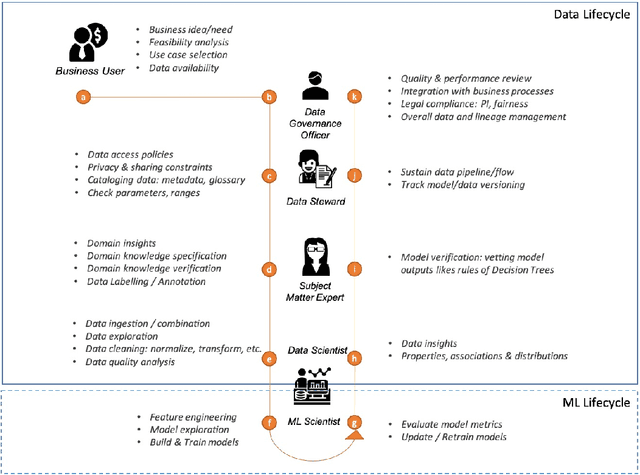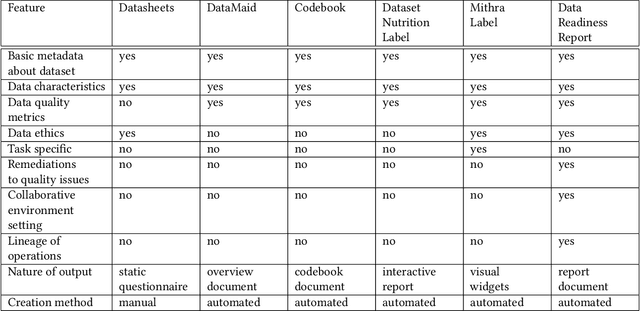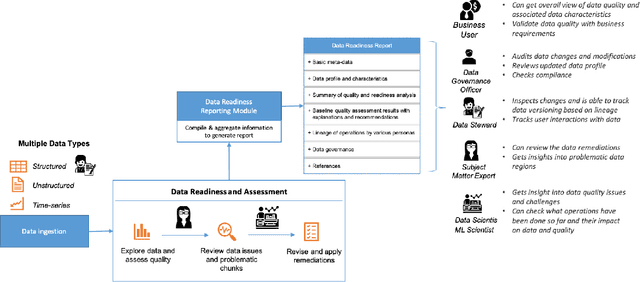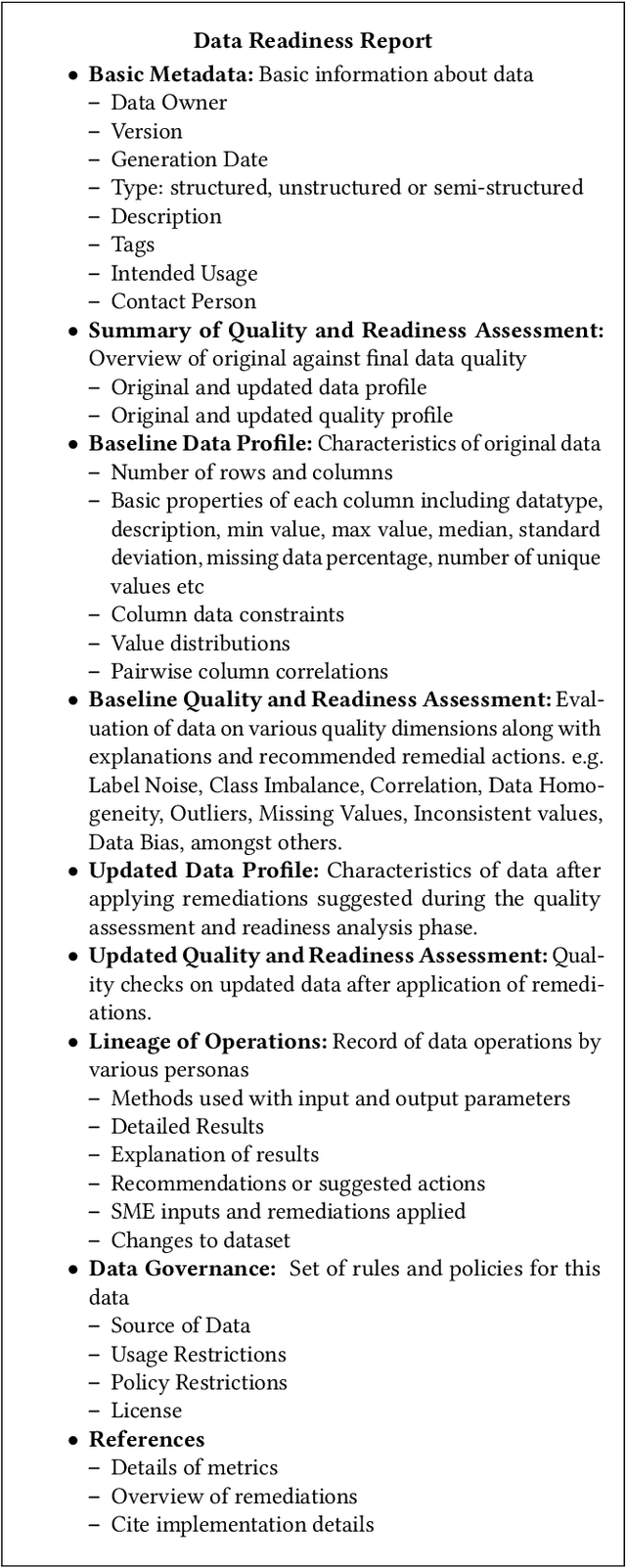Manish Kesarwani
Data Readiness Report
Oct 15, 2020



Abstract:Data exploration and quality analysis is an important yet tedious process in the AI pipeline. Current practices of data cleaning and data readiness assessment for machine learning tasks are mostly conducted in an arbitrary manner which limits their reuse and results in loss of productivity. We introduce the concept of a Data Readiness Report as an accompanying documentation to a dataset that allows data consumers to get detailed insights into the quality of input data. Data characteristics and challenges on various quality dimensions are identified and documented keeping in mind the principles of transparency and explainability. The Data Readiness Report also serves as a record of all data assessment operations including applied transformations. This provides a detailed lineage for the purpose of data governance and management. In effect, the report captures and documents the actions taken by various personas in a data readiness and assessment workflow. Overtime this becomes a repository of best practices and can potentially drive a recommendation system for building automated data readiness workflows on the lines of AutoML [8]. We anticipate that together with the Datasheets [9], Dataset Nutrition Label [11], FactSheets [1] and Model Cards [15], the Data Readiness Report makes significant progress towards Data and AI lifecycle documentation.
Model Extraction Warning in MLaaS Paradigm
Nov 20, 2017



Abstract:Cloud vendors are increasingly offering machine learning services as part of their platform and services portfolios. These services enable the deployment of machine learning models on the cloud that are offered on a pay-per-query basis to application developers and end users. However recent work has shown that the hosted models are susceptible to extraction attacks. Adversaries may launch queries to steal the model and compromise future query payments or privacy of the training data. In this work, we present a cloud-based extraction monitor that can quantify the extraction status of models by observing the query and response streams of both individual and colluding adversarial users. We present a novel technique that uses information gain to measure the model learning rate by users with increasing number of queries. Additionally, we present an alternate technique that maintains intelligent query summaries to measure the learning rate relative to the coverage of the input feature space in the presence of collusion. Both these approaches have low computational overhead and can easily be offered as services to model owners to warn them of possible extraction attacks from adversaries. We present performance results for these approaches for decision tree models deployed on BigML MLaaS platform, using open source datasets and different adversarial attack strategies.
 Add to Chrome
Add to Chrome Add to Firefox
Add to Firefox Add to Edge
Add to Edge